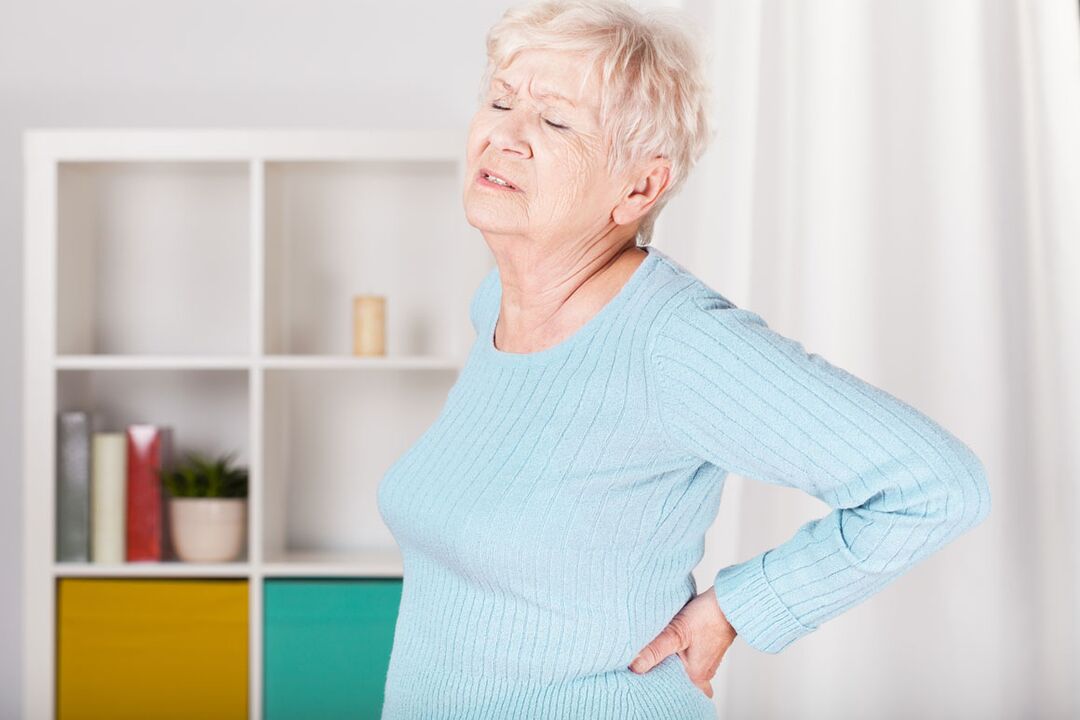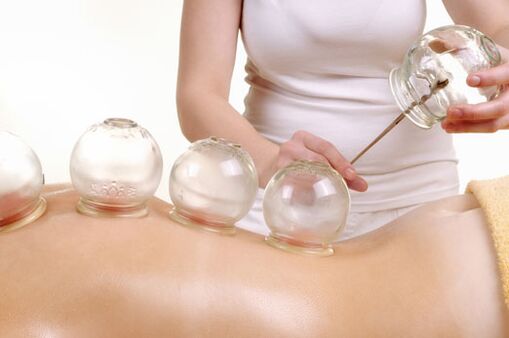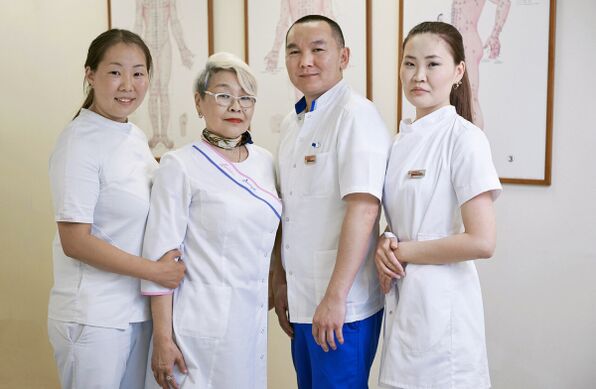Each of us has experienced back pain at least once - from mild weakness to unbearable thoracolumbar pain (pain in the lower back and chest). Occasionally, low back pain can be one of the manifestations of a wide range of diseases.

The most common cause of pain is osteochondrosis of the spine, which occurs in most people after the age of 35-40. However, it does not explain the severity and duration of the pain. To understand the nature of diseases, it is necessary to understand the problem and its origin in detail.
Reasons
There are many answers to why your back hurts. The main mechanisms of pain syndrome remain dystrophic and degenerative changes in the intervertebral discs. As a result, subluxation of the joints and compression of the nerve endings of the spine increase the symptoms.
Let's look at the different causes of back pain:
- Primary diseases of the spine: intervertebral hernia, osteochondrosis, spondylosis, kyphosis, scoliosis, arthritis.
- Injuries, bruises, fractures, tumors. These are called secondary causes of pain syndrome.
- Cardiovascular diseases.
- Nephrology: sand or kidney stones.
- In women, pain can be seen in addition to gynecological problems and even during menstruation.
Triggers for pain syndrome:
- sedentary lifestyle, sedentary work. This article covers staying behind the wheel of a car or computer monitor for a long time;
- overweight, obesity;
- pregnancy involves a combination of weakened lumbar muscles and weight gain;
- excessive physical activity (in daily life or in the gym);
- hypothermia of the body.
Possible diseases
The nature of the pain directly depends on the disease that triggers the symptom. In primary pathology (arthritis, intervertebral hernia), the lower back aches monotonously: the pain increases or decreases with a change in body position. Gas extremity is accompanied by burning, a feeling of constant numbness of the lower extremities. The dull pain observed with lumbosacral radiculitis is felt by the patient not only in the back, but also in the thigh, leg and thigh.
Diseases of the internal organs (angina pectoris, pyelonephritis)are characterized by a more pronounced and prolonged nature of pain that persists after rest or changes in body position. Thus, the lower abdomen is additionally disturbed by gynecological problems, and shortness of breath and shortness of breath are noted in cardiovascular pathologies.
Important! Specific pain in the lumbar region with high fever may be a manifestation of an emergency - kidney or gallstone colic, unstable angina pectoris.
Aggravated osteochondrosiswith sharp, shooting pains - lumbago ("lumbago"), spreads to the legs and pelvis during coughing or rapid movement. Herniated discs have the following characteristics:
- It is not possible to bend without squatting at first;
- difficult to lift without support (chair, knee);
- In a prone position, the patient is forced to put a pillow.
Inflammatory processes (myositis, radiculitis)Since the simplest movements are limited to pain syndrome, they continue with excruciating pain and inability to perform basic movements.
Fracture and dislocation, intense, increasing pain, accompanied by swelling of the affected area. Changes the skin color on the painful surface to blue or red (depending on the nature of the injury).
How to get rid of back pain
In the near future, excessive physical activity or prolonged exposure to drafts will cause back pain. Let's take a closer look at the simple and quick help for a familiar, boring pain.
If the pain syndrome manifests itself after hypothermia or inflammation of the spinal cord (sciatica), a hot shower will help. Any physical activity after bath procedures is contraindicated. Analgesic ointments have a warming, decongestant and anti-inflammatory effect.
Pain in osteochondrosis can be reduced through anti-inflammatory ointments and gels, as well as special exercises to relax the intervertebral discs and muscle corset.
Caries or wrinkles increase swelling. A dry cold compress (ice wrapped in a cloth from the freezer) will help reduce or prevent it. Apply to the sore spot every two hours for half an hour for two days.
It is important to remember that only a specialist can correctly determine the cause of pain and develop a treatment program. Therefore, if you experience alarming symptoms, we recommend that you make an appointment at our clinic.
Treatment and prevention of back pain
Western medicine is represented by three main therapeutic areas:

- medicated;
- non-medicinal;
- surgical.
Drug treatment involves taking pills and applying topical ointments, gels, and blemishes. Main drug groups:
- non-steroidal anti-inflammatory - NSAIDs (to relieve pain, inflammation);
- heparin ointments (eliminate swelling, improve venous flow);
- papaverine ointments (to relieve pain, relieve pain spasms, dilate blood vessels);
- chondroprotectors (restores cartilage tissue);
- muscle relaxant (relieve muscle tension).
A course of acupuncture is prescribed to prevent chronic diseases. The course of treatment of low back pain almost always involves the injection of B vitamins, improves metabolic processes and the regeneration of nerve fibers, stabilizes the central and peripheral nervous systems and restores impulse transmission. Analgesics are added to the drug to increase the therapeutic effect. Vitamins are combined with NSAIDs.
In acute conditions, doctors perform therapeutic blockades. Often used for diseases of the spine and joints. The doctor injects both anti-inflammatory drugs and adrenal hormones. Prednisolone or dexamethasone (the main representatives of the group) anesthetizes the affected area, reduces swelling.
Non-drug therapy includes physiotherapy - massage, cold therapy (cryotherapy), warming of the affected areas. Physiotherapy is usually prescribed in subacute conditions or in remission.
Surgical treatment. Surgical intervention is used in extreme cases - for malignant tumors, destruction of the spinal cord, compression fractures. Surgical treatment of herniated discs has caused professional controversy: the positive effects of surgery often do not justify themselves, and the risk of complications is very high.
Prevention measures:
- Exercise in the morning, including exercises to stretch your back muscles.
- Proper nutrition. Fried, salty, starchy foods, alcohol should be excluded - everything that contributes to the development of gastrointestinal diseases. It is necessary to add fiber, vitamins to the diet, cook meat and fish in a steamer or oven. It is recommended to drink up to 1. 5 liters of water to improve blood circulation and interstitial fluid production (unless otherwise indicated).
- Follow your posture.
- Occasionally walk or exercise in a sedentary work environment.
- It is recommended to sleep on orthopedic pillows and mattresses.
Treatment at the Tibetan Medical Clinic
Traditional Tibetan medicine considers lumbodinia to be a violation of the three constitutions. An angry dosha Safra spasms the back muscles. Excited mucus causes endocrine problems, metabolic diseases. Excessive constitution The wind (responsible for the nervous system) aggravates the incompatibility of the other two constitutions.

Oriental doctors not only eliminate the symptoms, but also help to understand the cause of the disease and cope with it.
At the clinic, you will not be offered to "shut down" the problem with pills, hormones and injections. Once the disease is diagnosed using ancient oriental methods, the patient will receive an individual treatment plan. The main example of treatment used by Tibetan doctors:
- Nutrition correction and restoration of mental peace, emotional background.
- Herbal medicine. Herbs and herbal remedies will solve the problem from within. The multi-component Tibetan preparations "Wind", "Slime", "Safra" restore the balance between the three constitutions. Unique collections not only stop the symptoms, but also have a healing effect on the whole body.
- Acupuncture. The effect of needles on bioactive points eliminates vascular and muscle spasms, increases blood flow to the damaged areas of the lower back.
- Acupressure massage. The specialist presses his fingers on the points of the energy meridians, which work with chronic diseases of the internal organs.
- Vacuum massage improves the microcirculation of not only the painful areas, but the whole body.
- Moxotherapy. Wormwood cigar restores the balance of the three doshas, the integrity of the whole system. Stone therapy. Cold and hot stones neutralize swelling and inflammation.
- Tsubotherapy is one of the acupuncture options using metal balls. Small balls are applied with plaster on bioactive points for up to 2 weeks.
- Hirudotherapy - cleansing the body of slag with leech, normalizing the body's metabolic processes.
The effectiveness of medical methods in the treatment of diseases of the musculoskeletal system has been proven and confirmed by our patients.


















































